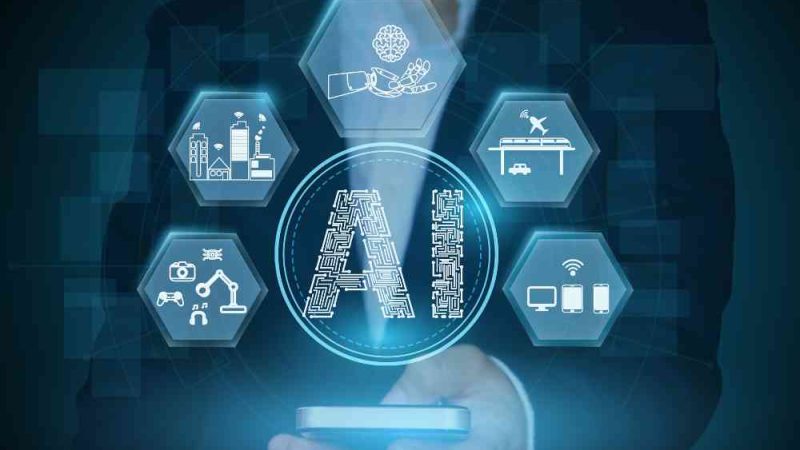The Technological Transformation Era in Digital Disruption

The concept of digital disruption has invaded the business world. New technologies have evolved at breakneck speed. Big data, cloud, IoT, RR. SS., hyperconnectivity. Business models have changed their structure and have modified the way companies are organized. It seems that there are only two options: adapt or disappear.
Transformation at Prodware, “we are immersed in the 4th Industrial Revolution, in the era of digitization. It is an exciting and critical issue that no one can be oblivious to. But this digitization that we are talking about would not be possible without technology.
In the complex and changing environment in which we live, technology is critical in our companies due to its impact on business and business models, and their evolution and transformation.”
What is Digital Disruption?
There is talk of an irreversible change that affects the traditional business model. The possibilities of new technologies have shaken the business organization.
Even the products and services have changed. So have relationships with customers, the way of working with suppliers, or the way of doing business.
Accept a Global Change
It is a global transformation. But facing the fact that companies must go digital is only the first step. However, everyone must face it, from large multinationals to new business models.
“Today, digital transformation allows us to streamline procedures, automate processes, make supply chains more efficient, etc. In the end, all of these capabilities are key in defining any business model and its transformational evolution”, which emphasizes the Prodware manager.
An undeniable and concrete example can be seen in the appearance of startups. They have been able to make the notion of disruptive technology their own. They have taken advantage of it by finding new market niches and offering services in increasingly specialized sectors.
The Change in Business Mindset
The global transformation forces companies to accept the end of the traditional model. The demands now focus on the people who must direct and integrate the companies. They must undergo a mental transformation to the new times.
For students of the phenomenon, the key is held by individuals. They are the ones who must lead the change. This is how to transform knowledge, assume entrepreneurship, and apply ICT.
A change of mentality is necessary that allows for a newer organizational model. Thus, all of the above will affect the markets. However, it is logical that many leaders in HR management live in a state of alert.
In fact, as Damien Peteau, CTO at Wolters Kluwer Tax & Accounting, points out, “companies have to support a culture of change. To survive, it is essential to be up to date in an increasingly competitive environment, and digitization is a must; it is something that cannot forget”.
The Position of the Leaders Before the Disruptive Process
Digital disruption requires a change in mentality and a deep analysis of the elements that affect the business process. Among managers and directors, the excitement of facing new challenges and the fear of an uncertain future coexist in equal parts. But the digitization process is necessary.
According to Javier Saenz de Jubera, President of Total Energies Electricidad y Gas, technology plays a more critical role daily.
It is enough to compare an energy company from 5 or 10 years ago with one from today and realize that changes of all kinds have indeed taken place. For example, the cloud debate has already been over for many years, and without it, we would be lost; we would not have the capacity to work at the moment.
The Need to Analyze Influencing Factors
Team members look hard at which businesses could trigger the disruptive process and anticipate which businesses to build relationships with. At the same time, they make cabals to implement the digital environment.
However, a CEO must ask himself if this is enough. You can’t focus attention on the companies causing disruption right now. A recent study claims that more than 50% of today’s companies will have exited the market in less than five years.
Where Should the Focus Be?
It is not a good idea to face the disruptive process as something punctual that affects the here and now. It is necessary to go further. The preparation of the company must broaden its sights; prevent a future that will bring with it other elements capable of producing a new disruption.
This is the dialogue carried on by many management teams today. Digital disruption forces the development of a deeper field of vision. Perhaps the best thing to do is figure out the nature of digital transformation and why other companies affect the business.
Analyze With an Open Mind
Since we cannot predict the virtual changes of the future, we will have to return to the origin. The team must be very clear about the drivers of supply and demand. You cannot lose sight of the way markets work and respond. This is the formula to shed a little light on the principles of the disruptive process and under what conditions it occurs.
This analysis will allow business leaders to have elements that reveal in advance the degree of exposure of the business.
It makes it possible to assess what types of threats and opportunities affect the company and how to locate the essential points of digital disruption. With this procedure, they will have indicators that detect the urgency of actions to control these threats and take advantage of opportunities.






